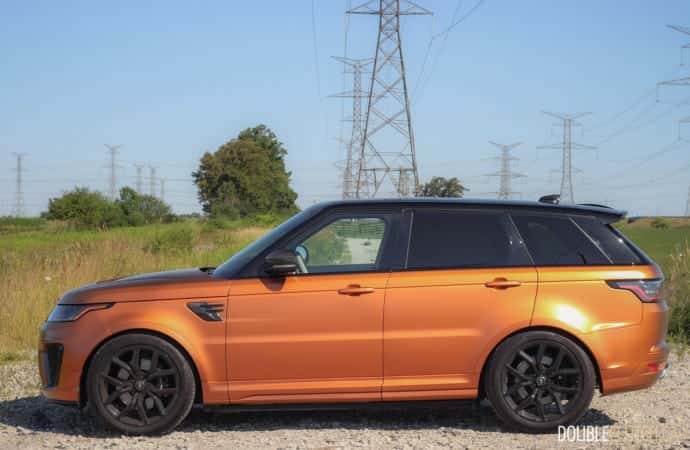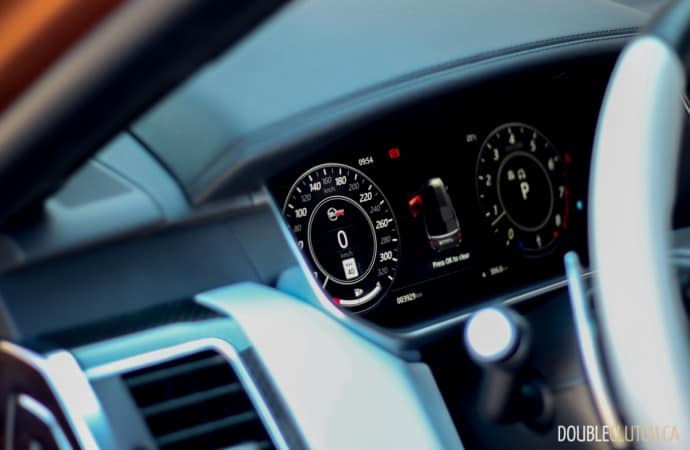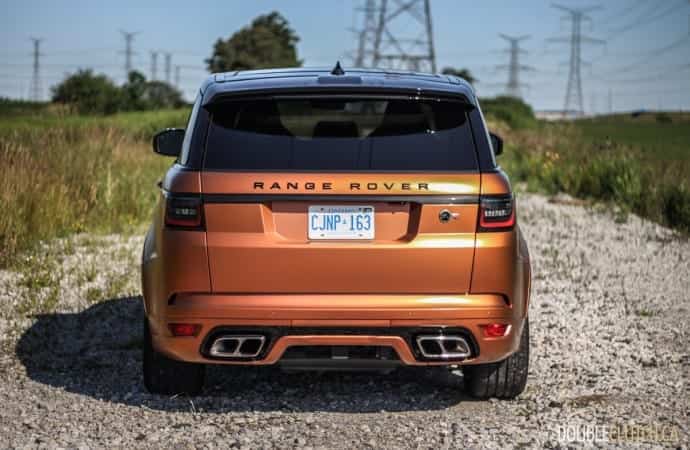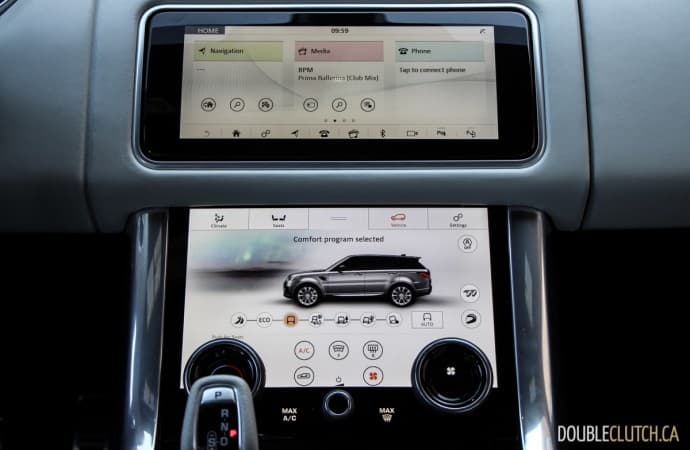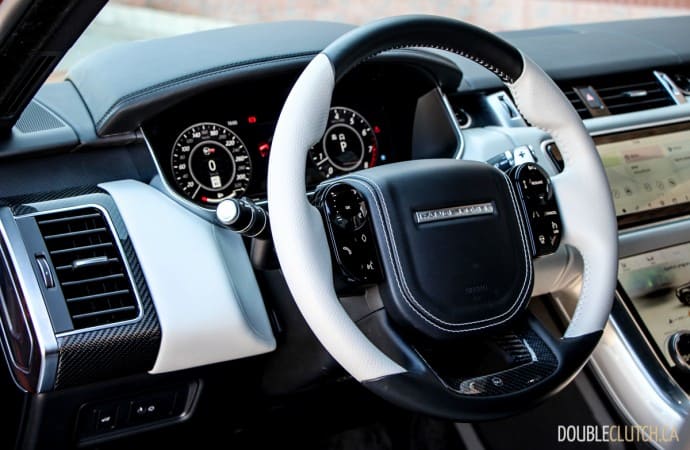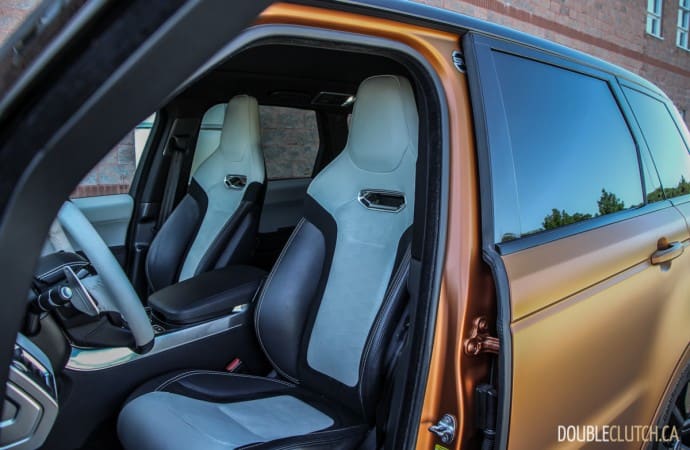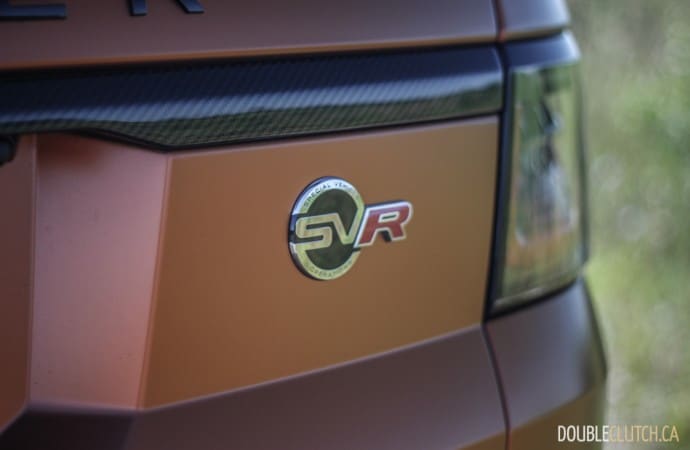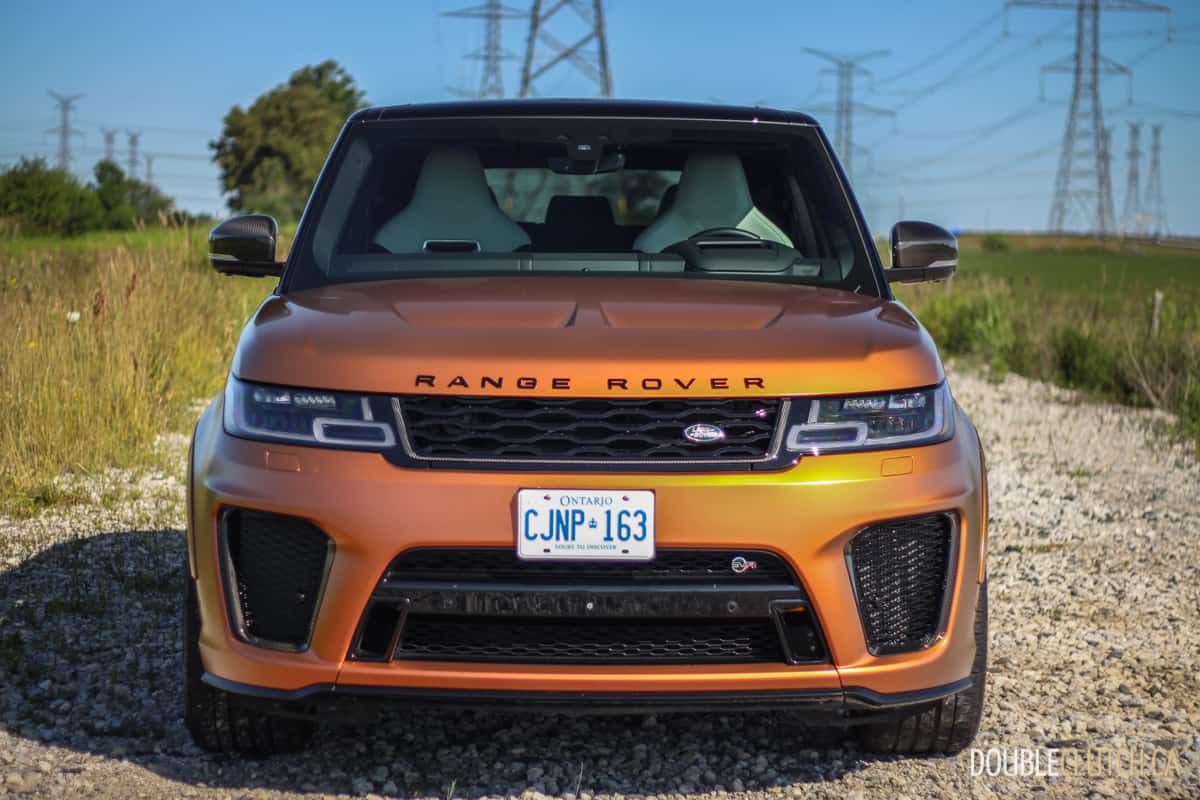Summer is in full swing here, and that means we’ve had a plethora of high performance cars pass through our garage. Everything from our own MX-5 long-term tester (reviewed here), to the fire breathing Dodge Hellcat Redeye, and more. It’s also my first summer as a father, and that means I’ve been finding myself relegated to the wife’s SUV for getting anywhere as a family. When Land Rover offered us a week with the fastest Range Rover they have ever made, – the 2019 Land Rover Range Rover Sport SVR, I jumped at the chance to get some solid wheel time with it.
At first blush, the high-performance SUV seems a bit silly. Why build an SUV to do something that a sports car is predisposed to be better at? As I’ve discovered, sometimes you just can’t take the sports car, and that’s where the SVR comes in – that is, assuming you have the means. Love it or hate it, the Range Rover Sport SVR is anything but conservative. In fact, the SVR treatment sort of flies in the face of the traditional Land Rover off-road image.
Hunkered down low on adjustable air-ride suspension and massive 22” black wheels sitting in ostentatiously flared wheel wells, it really is a total departure from that traditional image. It is however, one heck of an eye catcher, and there will be no confusing the SVR for lesser versions of the Range Rover Sport. The SVR comes with much more aggressive looking front and rear fascia, deep vents in the SUV’s carbon fibre composite hood, massive branded calipers and huge quad exhaust outlets in the back.
Finished in a tasteful color the Sport SVR is an SUV of stunningly good looks, combining high-performance muscle with a touch of elegant British styling. Our tester came finished in Madagascar Orange, a $6,100 optional color, with a satin matte finish, a $3,210 option. The copper orange compliments the blacked out trim and wheels, and the carbon fibre accent package (a $6,730 option), but it’s way too flashy in my opinion for an SUV that is already an attention grabber for more important reasons.
The main reason here is be the supercharged 5.0L V8 that makes 575 horsepower and 516 lb-ft. of torque at 2,500RPM. This is an absolute gem of an engine. Shared with the Jaguar F-Type SVR (reviewed here), this powerhouse has no problem flinging the 5,000-pound SUV around with authority taking it from 0-100 km/h in a reported 4.5 seconds. It also boasts one of the best exhaust soundtracks out there through the SVR active exhaust system. “Quiet mode” is far from quiet, and the loud mode burbles, howls, cracks and pops in all the best ways. The sound alone is intoxicating and makes it difficult to keep your foot off the accelerator.
Power is fed to the full time all-wheel-drive system through an eight speed automatic, which does a commendable job both keeping up with performance driving and keeping things comfortable, smooth and relaxed when you’re cruising. The powertrain engineers have really done an amazing job with the Sport SVR; it’s difficult to keep a grin off your face when you’re driving. Tip the throttle and you’re blasting onto the highway instantly in a wave of howls from the exhaust.
Switching to Dynamic Mode takes the SVR from a sporty yet soft-riding SUV to a much more performance oriented setup, one which will have you forgetting that you are driving a very heavy off-road vehicle. It also stiffens the air suspension and steering, increases throttle response, and adjusts the shift mapping to be more aggressive. The Sport SVR can’t break the laws of physics, but it handles nearly as well as any high-end sport sedan, and can be plenty of fun out on the twisties.
Range Rover hasn’t completely neglected their roots and the SVR does still come with a dual transfer case with high and low range. The suspension can be raised with the touch of a button for plenty of extra ground clearance. It also has Land Rover’s Terrain Response system, allowing drivers to toggle between Comfort, Eco, Grass/Gravel/Snow, Mud/Rut, Sand, Rock Crawl, and Dynamic modes. Each mode tailors the all-wheel drive system, along with a host of other inputs such as suspension, throttle response, steering and the transmission to optimize the Range Rover’s ability to tackle whatever you ask of it.
The Range Rover Sport SVR really is a bit of an engineering marvel when you think about it. How can one SUV be so quick, sound so good, handle so well, yet still manage to remain perfectly comfortable and serene inside? It’s just fantastic.
There is one penalty, and that comes at the fuel pumps. The Sport SVR is thirsty averaging 16.0L/100km over a week of commuting, and that’s with my best efforts to keep things frugal. Of course, premium 91-octane fuel is required, so if you’re worried about dropping money at the gas station, you’ll probably want to look at the Range Rover Sport’s frugal Td6 diesel variant.
The interior is everything you’d expect from a Range Rover at this price point. Acres of fine leather are in play; in the case of our tester gorgeous Ebony and Citrus. The seats in the SVR are specialized heated and cooled sport seats shaped similar to racing seats with big bolsters, but unlike racing seats are extremely comfortable. Even the rear seats are designed in a similar theme, which goes a long way to make the interior of the SVR feel special compared to the standard Sport.
Our tester also received the Extended Carbon Fiber Interior package for $2,350, which beautifully inlays glossy real carbon-fiber throughout the interior. It is a very extensive treatment and looks great with the black and white leather. My only disappointment with the interior is the headliner. While the ceiling is dominated by the full-length panoramic sunroof, the only headliners available are a light grey cloth or the optional ($410) black Morzine cloth – black suede or similar really should have been the choice here.
The only real distraction with the Range Rover Sport SVR that does take away from its day-to-day enjoyment to some degree is the infotainment system. The system, called InControl Touch Pro Duo is shared amongst most Land Rover vehicles. In the Sport it uses two stacked 10” touchscreens. The screens look great, but in practice are cumbersome to operate. Every function seems buried, the buttons are small and you often have to reach uncomfortably far to touch the far edge of the screen to find an important function.
A base model Range Rover Sport with the diesel engine starts at $81,800, while our tester’s MSRP is nearly double that at $161,650. For that sort of money you can get into a serious performance car like a Mercedes-AMG GT (reviewed here) and have enough money left over to buy yourself a more pedestrian SUV. There’s no way that can double as your family hauler, while the Sport SVR does it with grace and confidence. You can get into a basic SVR for a starting price of $135,000. The optional list however, is vast.
Our tester came with $19,710 of exterior options, most notably the orange matte paint, 22” wheels and the extra carbon fibre trim. $3,070 was spent on the interior, the majority of that on more carbon-fiber trim, and another $3,870 in tech options including the Driver Assist package. If you so choose, you could pretty easily option one of these to be north of $170,000.
The 2019 Range Rover Sport SVR certainly isn’t for everyone, but rather is for the family man who likely wants to extend driving pleasure to include the family hauler as well. In that situation, the SVR without a doubt is the right option. If you’re simply looking for the most aggressive looking, meanest sounding and best-driving SUV out there, look no further.

